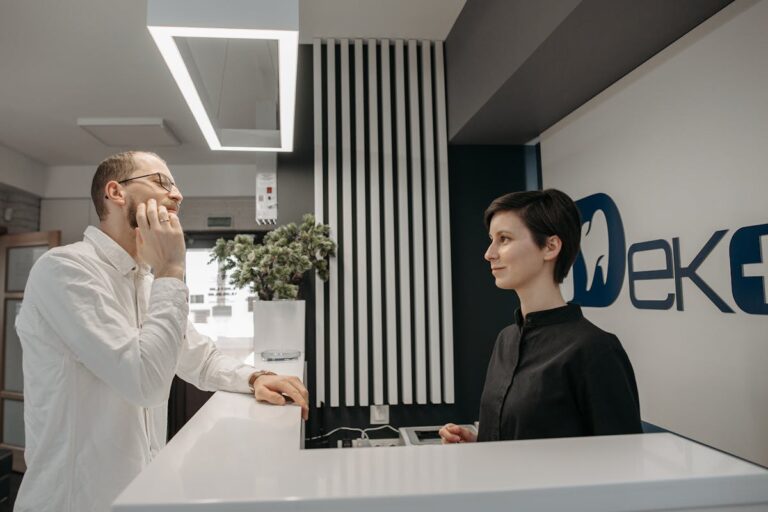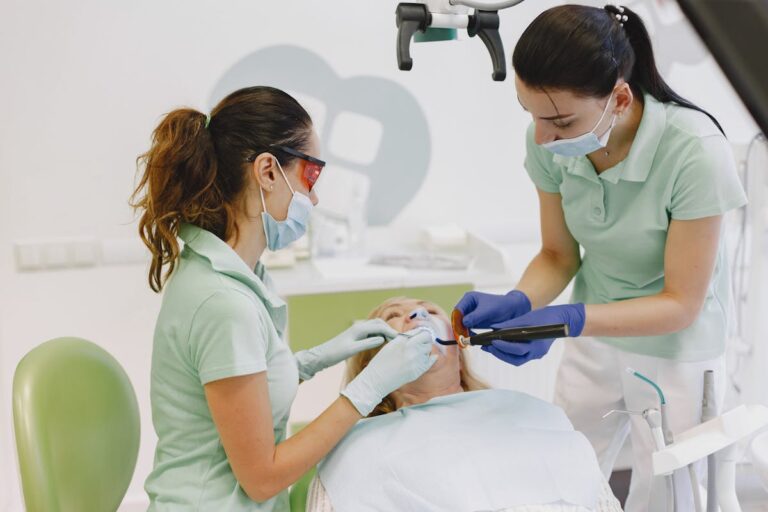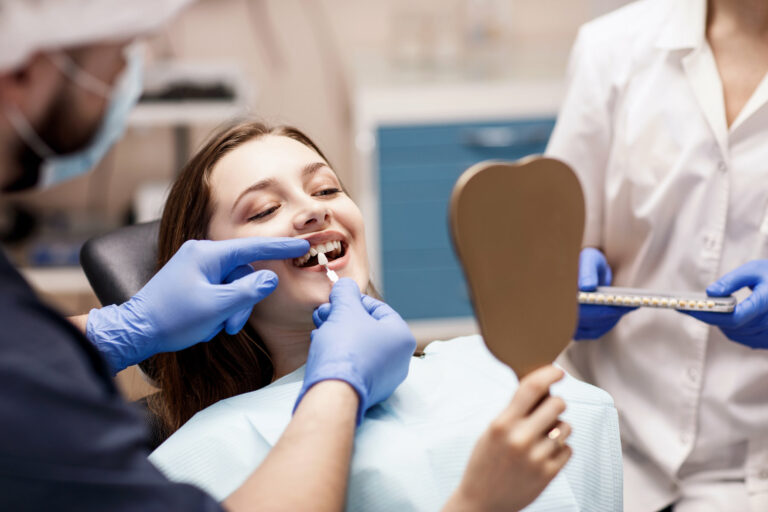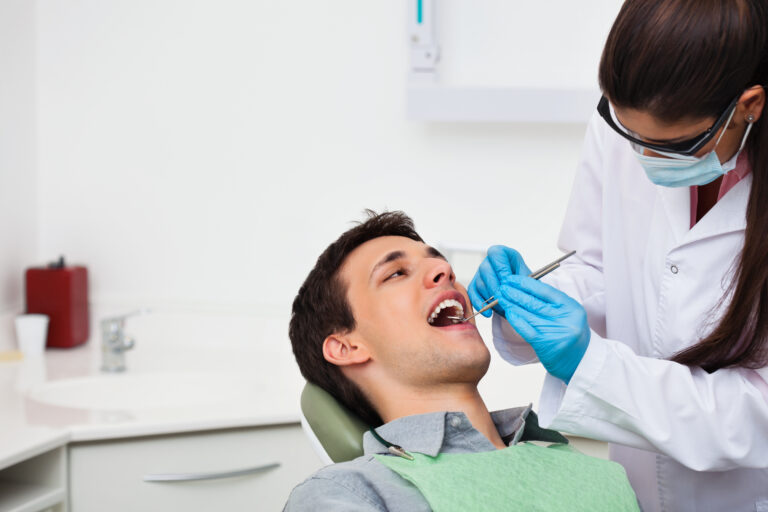Invisalign vs Braces Benefits in Woodinville
When considering orthodontic treatments in Woodinville, you might find yourself weighing the benefits of Invisalign against traditional braces. Both options are effective, yet they cater to different needs and preferences. Invisalign offers the advantage of clear, removable aligners, making oral hygiene easier. Braces, however, provide robust solutions for complex dental corrections. What factors should guide your decision in choosing between these options? Let’s explore further.
Understanding Invisalign and How It Works
Invisalign, as a modern orthodontic alternative, has taken over traditional braces by offering a less intrusive approach to teeth alignment. Utilizing advanced aligner technology, Invisalign creates a series of clear, removable trays that gradually shift your teeth into the desired position. Each aligner is meticulously designed using 3D imaging software, ensuring a precise fit tailored to your dental structure. Partnering with trusted invisalign providers in Woodinville ensures your treatment plan is guided by experienced professionals who understand how to optimize every stage of your alignment journey. These customizable aligners are crafted from BPA-free plastic, providing a comfortable and nearly invisible solution that allows you to maintain your lifestyle without the restrictions of metal braces. You’ll replace your aligners approximately every two weeks, with each set engineered to apply specific pressure on targeted teeth, guiding them efficiently towards alignment. This process is both discreet and highly effective.
Exploring the Mechanics of Traditional Braces
When you examine traditional braces, you’ll notice that they consist of several key components: brackets, archwires, and ligatures, all working together to correct dental alignment. The metal brackets are attached to each tooth and act as anchors, while the archwire runs through these brackets, applying consistent pressure to guide teeth into their desired positions. Ligatures, often small rubber bands, secure the archwire to the brackets, ensuring the system functions efficiently and effectively.
Braces Components Breakdown
Although modern orthodontics offers various options, the mechanics of traditional braces remain unparalleled in their precision and effectiveness. Central to their design are the wire components and bracket positioning. The brackets, usually metal, are bonded to each tooth’s surface with precise alignment, ensuring controlled directional force. These brackets serve as anchors for the archwire, the main wire component, which threads through them. The archwire is crafted from materials like stainless steel or nickel-titanium, chosen for their flexibility and memory-shape properties. By adjusting the tension in the archwire, orthodontists can manipulate teeth movement accurately, guiding them into ideal alignment. Ligatures, small elastic bands, secure the wire to the brackets, maintaining tension and ensuring consistent pressure is applied for effective realignment.
Metal Braces Functionality
Metal braces consistently demonstrate their effectiveness through a well-orchestrated system of components working together to realign teeth. By applying constant pressure, metal braces guide teeth into their correct positions over time. This system’s strength lies in its metal braces durability, ensuring they withstand daily wear.
Key features of metal braces functionality include: – Archwires: These are central to the adjustment process, exerting pressure on teeth with precision. – Brackets: Cemented to each tooth, they act as anchors for the archwires, providing stability. – Elastic bands: They connect the archwires to brackets, enhancing metal braces adaptability for customized alignment. – Periodic adjustments: Regular visits to the orthodontist allow for fine-tuning, ensuring ideal alignment progress.
This structured approach showcases the balanced effectiveness of traditional metal braces.
Aesthetic Differences: Invisalign vs. Braces
How do Invisalign and braces compare regarding aesthetics? If you’re concerned about maintaining a natural appearance during orthodontic treatment, Invisalign offers a distinct advantage. These clear aligners are almost invisible, providing subtle aesthetics that blend seamlessly with your teeth. Unlike traditional braces, which use metal brackets and wires, Invisalign aligners don’t draw unwanted attention to your mouth. This makes them an ideal choice if you prefer a discreet treatment option.
Braces, on the other hand, are more noticeable due to their metallic components. While they can be customized with colored bands, they lack the understated elegance of Invisalign. If aesthetics are a priority for you, Invisalign’s nearly imperceptible design allows you to straighten your teeth without compromising your smile’s natural beauty.
Comfort and Convenience in Orthodontic Options
When considering orthodontic treatments, many patients find that comfort and convenience play a significant role in their decision-making process. Invisalign offers several advantages in these areas compared to traditional braces. With its removable aligners, Invisalign facilitates improved oral hygiene, allowing you to brush and floss without obstruction. Additionally, Invisalign typically requires fewer in-office visits, leading to streamlined appointments and less time spent in the orthodontist’s chair.
Key benefits include:
- Removable aligners: Eat what you want without dietary restrictions.
- Reduced discomfort: Smooth plastic aligners are gentler on gums and cheeks.
- Fewer adjustments: Typically, you switch aligners every two weeks at home.
- Minimal maintenance: Cleaning aligners is straightforward, enhancing convenience.
These factors make Invisalign an appealing option for those seeking a hassle-free orthodontic experience.
Addressing Complex Dental Issues
While comfort and convenience are significant factors in choosing an orthodontic treatment, addressing complex dental issues is equally important for achieving ideal results. You must consider that complex dental treatments often require a thorough understanding of your unique dental structure. Exhaustive oral evaluations are essential in determining the best course of action. These evaluations help identify issues like severe crowding, misaligned jaws, or crossbites that might necessitate more intricate interventions. Traditional braces are typically more effective for these challenging cases due to their robust ability to apply precise pressure over time. However, advancements in Invisalign technology have expanded its capability to tackle moderately complex issues. Consulting with an orthodontist will guide you in selecting the appropriate treatment for your specific needs.
Treatment Duration: What to Expect
Understanding treatment duration is imperative when deciding between Invisalign and traditional braces. The treatment timeline can drastically impact your choice, as it varies based on individual orthodontic needs. Invisalign typically offers a shorter length of treatment, averaging 12 to 18 months, while traditional braces may range from 18 to 24 months. If you’re considering these options, here’s what you might expect:
- Invisalign: Often quicker for mild to moderate cases.
- Traditional Braces: Better for complex adjustments, potentially longer.
- Consistency: Invisalign requires wearing aligners 20-22 hours daily, affecting the timeline.
- Regular Adjustments: Braces need adjustments every 4-6 weeks, impacting the overall length.
Ultimately, consulting with an orthodontist will provide clarity on your specific treatment timeline.
Maintenance and Cleaning: Invisalign vs. Braces
As you consider the treatment duration, another critical factor is how the maintenance and cleaning of Invisalign compare to traditional braces. Invisalign requires daily cleaning to prevent plaque buildup; remove them before eating and brush them gently with a soft toothbrush and lukewarm water. These aligners should be stored in their designated case when not in use, ensuring they’re not misplaced or damaged. On the other hand, braces involve meticulous cleaning around brackets and wires. You’ll need to use special tools like interdental brushes or water flossers to reach difficult areas. Unlike Invisalign, braces don’t have storage considerations, but maintaining oral hygiene can be more challenging. Both options demand commitment to daily cleaning requirements to achieve ideal dental health.
Cost Considerations and Insurance Coverage
When evaluating the financial aspects of orthodontic treatments, it’s crucial to ponder both the initial costs and long-term expenses associated with Invisalign and traditional braces. Understanding these factors helps in making informed decisions. Both treatments come with unique pricing structures and considerations:
- Payment Plans: Many orthodontists offer flexible payment plans to ease the financial burden, allowing you to spread costs over time.
- Insurance Coverage: Check with your provider, as some insurance plans cover part of the treatment costs, reducing your out of pocket expenses.
- Initial Costs: Invisalign often has a higher initial cost compared to braces, but it may vary based on treatment complexity.
- Out of Pocket Expenses: Consider potential additional costs, such as replacement aligners or emergency visits for braces.
Lifestyle Impacts of Invisalign and Braces
While financial considerations are significant, the impact of orthodontic treatments on daily life is equally important. Invisalign and braces affect your lifestyle differently. Invisalign aligners are removable, allowing you to maintain ideal dental hygiene by brushing and flossing with ease. This feature reduces the risk of plaque buildup, which is essential for oral health. In contrast, braces require diligent cleaning around brackets and wires, potentially complicating your routine.
Social impact is another consideration. Invisalign’s clear aligners are nearly invisible, offering a discreet option that minimizes self-consciousness in social settings. Braces, though more noticeable, come in various styles and colors, allowing for some personalization. Each option carries unique lifestyle implications, influencing how you navigate daily activities and social interactions.
Choosing the Right Orthodontic Solution for You
When choosing between Invisalign and braces, it’s essential to reflect on how each option aligns with your personal lifestyle, such as dietary restrictions and daily maintenance routines. Additionally, you’ll need to factor in the differences in treatment duration, as Invisalign might offer a shorter timeline depending on the complexity of your case. Comfort and aesthetics also play a significant role, as Invisalign provides a more discreet appearance, while traditional braces may offer different levels of support for complex orthodontic needs.
Personal Lifestyle Considerations
Selecting the most suitable orthodontic solution hinges on how well it aligns with your personal lifestyle and daily routines. Consider how personal lifestyle changes might affect your choice between Invisalign and braces. If maintaining dental hygiene habits seamlessly is critical, Invisalign may offer an edge, as you can remove the aligners for brushing and flossing.
- Convenience: Invisalign aligners can be removed, allowing for easier eating and cleaning.
- Aesthetic Preferences: Clear aligners are less noticeable, catering to those prioritizing discreet treatment.
- Dietary Restrictions: Braces require you to avoid certain foods; Invisalign doesn’t impose such restrictions.
- Comfort: Invisalign lacks the metal brackets and wires associated with braces, potentially offering more comfort.
Evaluate these factors to guarantee your orthodontic choice fits your lifestyle needs.
Treatment Duration Differences
Understanding the differences in treatment duration between Invisalign and traditional braces is essential for choosing the right orthodontic solution. Invisalign typically offers a shorter treatment timeline, often ranging from 12 to 18 months, depending on the complexity of your case. The clear aligners are designed to move teeth incrementally and require regular replacements every one to two weeks, ensuring consistent progress.
In contrast, traditional braces usually have a treatment length between 18 to 24 months. Their effectiveness is influenced by factors such as the severity of misalignment and the need for additional orthodontic appliances. While both methods aim to achieve ideal alignment, the quicker treatment timeline of Invisalign can be advantageous for those seeking faster results. Consulting with an orthodontist will determine the best option for your needs.
Comfort and Aesthetics
Although both Invisalign and traditional braces aim to correct dental misalignment, their differences in comfort and aesthetics considerably impact your orthodontic experience. Invisalign offers a discreet appearance, making it ideal if you’re conscious about visible orthodontics. The clear aligners are custom-made and fit snugly over your teeth, providing a seamless look. Additionally, the smooth plastic material guarantees reduced irritation compared to metal brackets and wires.
- Discreet appearance: Clear aligners are barely noticeable.
- Reduced irritation: No sharp brackets or wires to cause discomfort.
- Removability: You can take them out while eating or brushing.
- Custom fit: Aligners are tailored to your teeth’s structure.
These factors make Invisalign a compelling choice if comfort and aesthetics are priorities in your orthodontic journey.
Frequently Asked Questions
Can Invisalign or Braces Affect Speech Clarity?
Yes, both Invisalign and braces can affect speech clarity. You’ll likely notice speech impediment risks initially. Speaking adjustments are often needed as you adapt to the appliances, though most people find these issues temporary and manageable.
Are There Any Dietary Restrictions With Invisalign?
With Invisalign, you won’t face strict dietary restrictions. Eating convenience is enhanced since you can remove the aligners, but meal planning considerations include ensuring thorough cleaning before reinsertion to prevent bacteria build-up and maintain oral hygiene.
Can I Switch From Braces to Invisalign During Treatment?
Yes, you can switch from braces to Invisalign mid-treatment. A seamless conversion requires an orthodontist’s evaluation to guarantee alignment progress. Your treatment plan will be adjusted, considering any changes needed for effective mid-treatment changeover to Invisalign.
Do Invisalign Trays Cause Any Allergic Reactions?
Invisalign trays can sometimes cause allergic reactions, including potential skin irritation and adverse dental reactions. If you notice unusual symptoms, consult your dentist immediately to determine if an alternative material or treatment might be necessary for you.
How Often Are Orthodontic Check-Ups Required With Invisalign vs. Braces?
With Invisalign, you’d typically have orthodontic check-ups every 6-8 weeks for periodic progress monitoring, while braces might require more frequent aligners adjustments every 4-6 weeks to guarantee everything’s aligning properly and address any issues.






